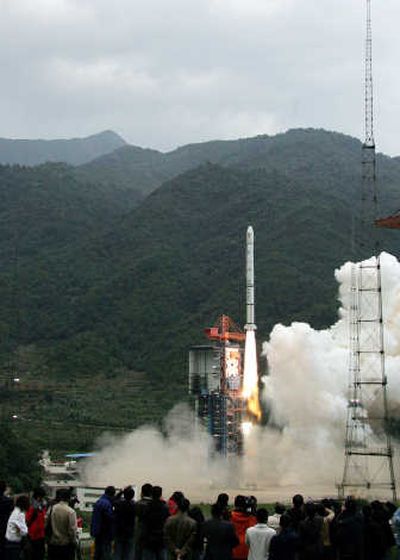China steps up space race with moon launch

BEIJING – Half a century after the Soviet Union beat the United States to outer space, China blasted off its first lunar orbiter Wednesday, catapulting the Asian nation onto the front lines of a new space race.
The Chang’e One satellite, named after a mythical beauty who flew to the moon, lifted off under cloudy skies in western China’s Sichuan province aboard a Long March A3 rocket. It will spend a year circling and studying the lunar surface and laying the groundwork for the goal of making China the first Asian nation to put an astronaut on the moon.
The liftoff was broadcast on state television, witnessed by government officials and about 2,000 space enthusiasts who paid about $100 each to see it on-site. This expensive technological spectacle was contrasted by the evacuation of thousands of farmers in nearby villages who had to temporarily put away their plows and walk away from their pigs as a safety precaution.
Beijing aspires to put an astronaut on the moon within 10 to 15 years, leaving it ahead of Japan, which launched an unmanned moon orbiter last month, and India, which hopes to do the same in April.
The launch of the Chang’e marks the first of a quest to land a moon rover, probably in 2012, and another one about five years later, to bring back soil samples.
China says its intentions are peaceful, but its space ambitions startled the world in 2003 when it became the third nation, after the Soviet Union and the United States, to send an astronaut into space aboard its own rocket.